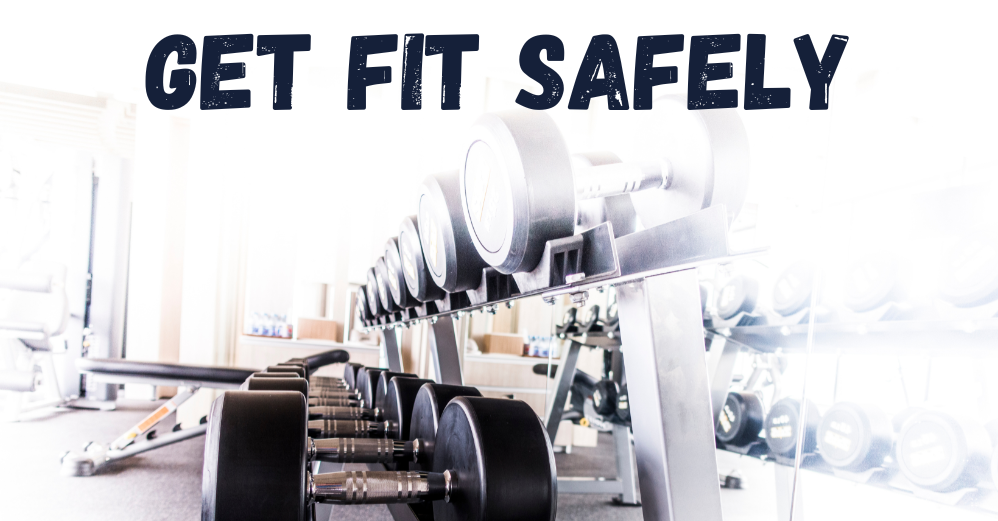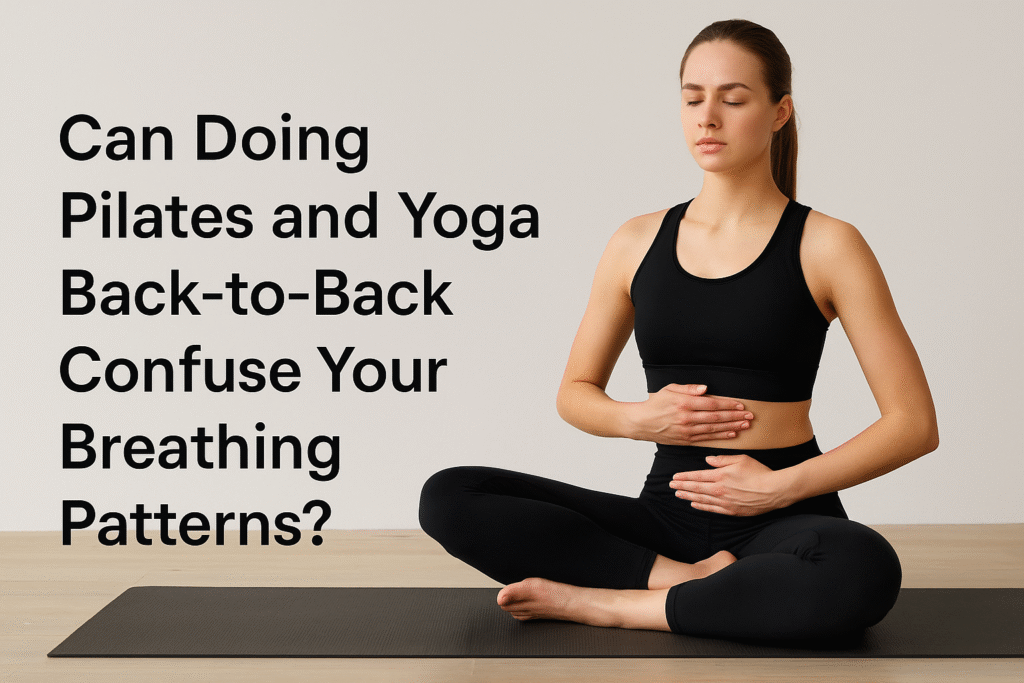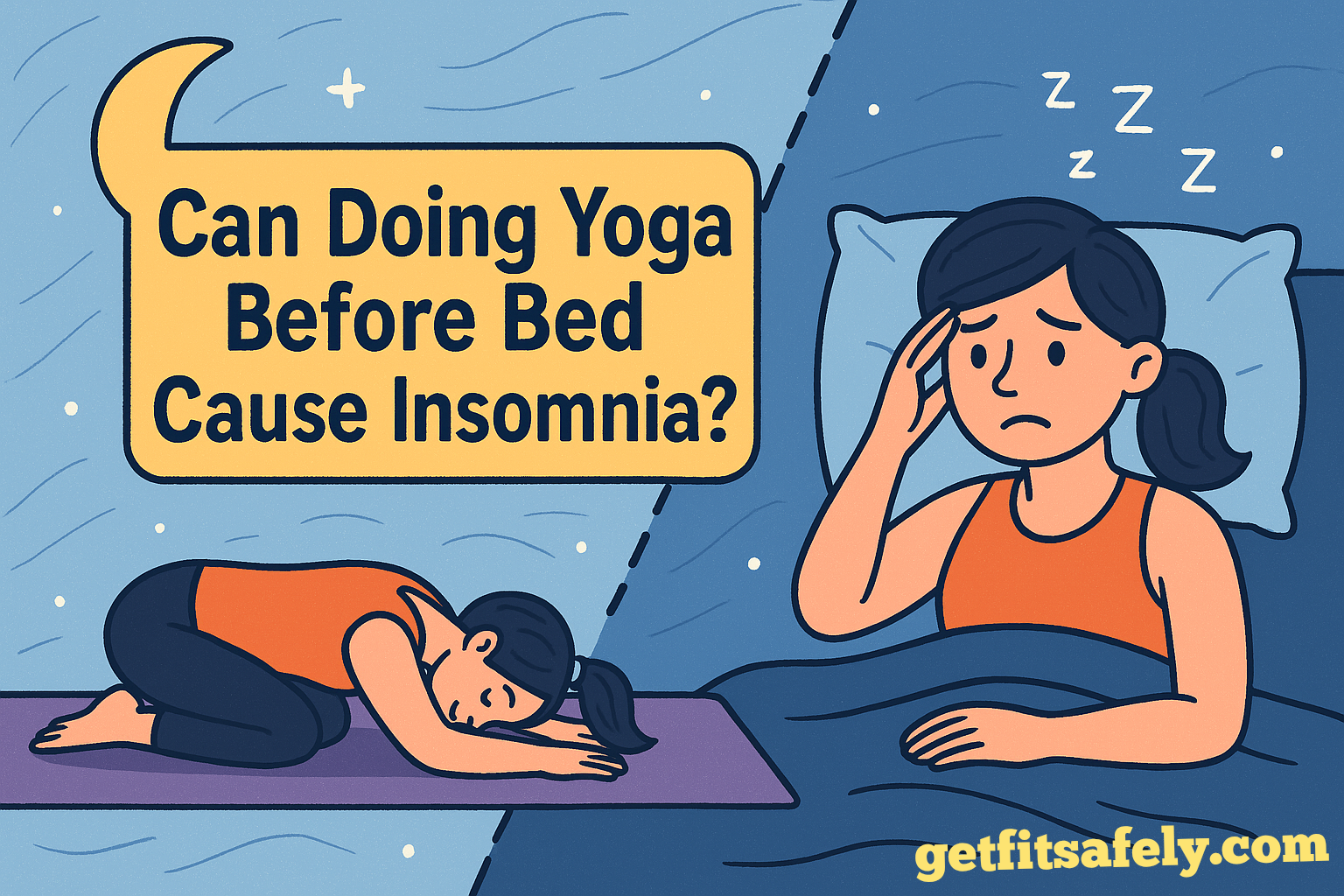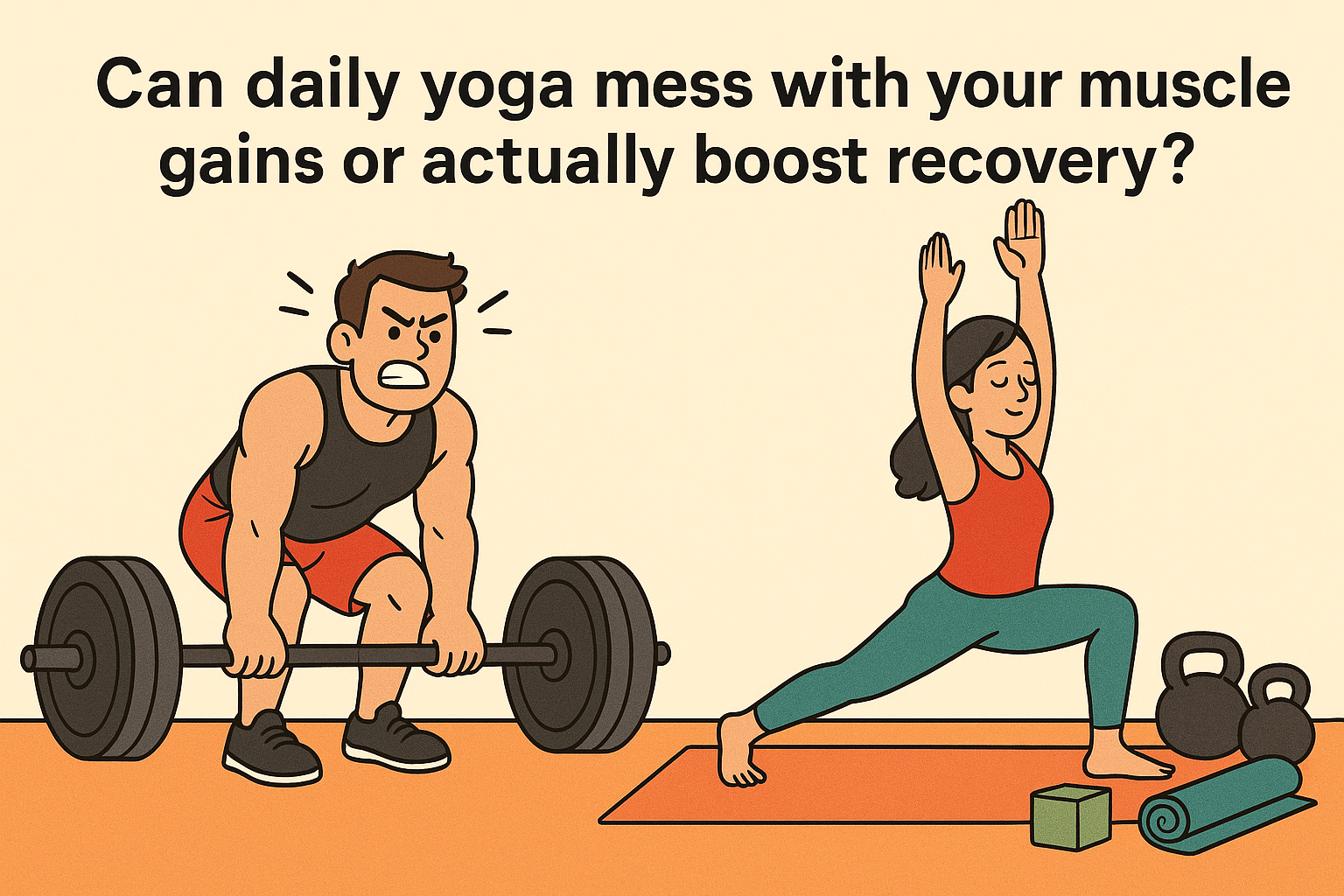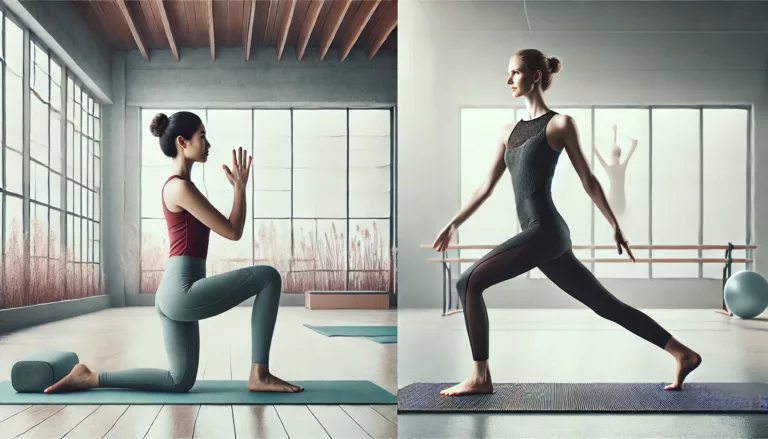The first time I did a Pilates class followed immediately by yoga, I felt like my lungs had lost their instruction manual.
One moment I was told to inhale by expanding my ribs, the next I had to puff my belly like a zen balloon.
By the end I didn’t know if I was oxygenating my blood or playing a game of “who can hold their breath the longest.”
So yes, doing Pilates and yoga back-to-back can definitely create a respiratory short circuit.
But the issue isn’t as simple as it seems, and behind that feeling there’s an interesting logic worth understanding.
Two breathing philosophies face to face
Pilates sees breath as a technical tool.
It often emphasizes lateral thoracic breathing: inhale through your nose, expand your ribs like an accordion, then exhale deeply as if you’re fogging up a mirror.
The purpose? To stabilize the core and protect the spine while moving with control.
Yoga, on the other hand, takes the opposite approach.
The focus is on deep diaphragmatic breathing, sometimes with precise techniques like Ujjayi (that sound like ocean waves or, for the nerds, Darth Vader).
Here it’s not about stiffening the core, but about relaxing the body, slowing the heart, and guiding the mind into a meditative state.
Putting these two techniques back-to-back is like asking your brain: “Do you want to be a race car engine or a Tibetan monk?”
Result: guaranteed confusion.
Pulled nerves in both directions
There’s also a physiological reason.
Pilates breathing tends to activate the sympathetic nervous system—the one that keeps you awake, sharp, and ready.
Yogic breathing instead activates the parasympathetic, the one that shifts you into relax-and-digest mode.
Doing both practices within minutes is like alternating between espresso and chamomile tea: the body doesn’t know whether to run a marathon or take a nap.
That’s why some people leave this combo feeling tired, restless, or even a bit dizzy.
Personal experience (spoiler: I wasn’t a zen master)
I remember one morning when I did a Pilates reformer class followed by an hour of hot yoga.
During the second round it felt like my “Wi-Fi breathing” kept cutting out: one moment I was in rhythm, the next I was gasping like a fish out of water.
My legs held up fine, but my breath was a complete mess.
And yet, in that chaos I realized there was hidden value.
Learning to “switch gears” between two opposite breathing styles improved my body awareness more than I had imagined.
How to stop breath from becoming your enemy
If you like the idea of pairing both practices, here are some practical tricks to make it smoother:
- Do a reset between classes: just two minutes of “box breathing” (inhale 4 sec, hold 4, exhale 4, hold 4) is enough to reset your system.
- Set a priority: decide if you want the day to focus more on stability (Pilates) or relaxation (yoga). That guides the rest.
- Don’t force the pattern: if in Pilates you slip into a slower diaphragmatic breath, accept it. Better follow the body than act like a robot.
- Use breath as feedback: if you’re panting, you’re pushing too hard. If you feel sleepy, you’re letting go too much. Your breath gives real-time answers.
It’s not about “speaking two languages perfectly in an hour,” but about becoming better at translating what your body asks for.
The hidden benefit most people overlook
At first you’ll feel clumsy, like trying to dance salsa and tango to the same song.
But with time, that confusion becomes powerful training.
Your respiratory muscles (yes, they’re real: diaphragm, intercostals, pelvic floor) get more flexible and ready to change rhythm.
Your ability to modulate breath depending on the situation grows.
And this doesn’t stay on the mat: it helps when you run, lift weights, or handle a stressful day.
Because if you learn to switch from “power mode” to “calm mode” on command, you gain an extra gear in the gym and in life.
Practical tips for regulars
If you’re one of those who love stuffing yoga and Pilates into the same day like a fitness “combo meal,” here are strategies to avoid short-circuiting.
- Alternate intensity: if you do a very technical, demanding Pilates (say, on reformer), go for softer yoga like Yin or Hatha instead of a 90-minute Vinyasa. That way your nervous system doesn’t feel yanked around.
- Create a transition ritual: it’s not enough to change rooms or roll up the mat. A small ritual—like slowly sipping a glass of water or taking 5 deep breaths with hands on your belly—signals your body you’re switching modes.
- Watch meal timing: doing Pilates “on a full stomach” is already tricky, adding yoga right after can become a digestive battle. Better to arrive light.
Small adjustments make the difference between a combo that leaves you drained and one that truly gives you more.
When it’s better to keep them separate
There are times when doing yoga and Pilates on the same day just isn’t the best idea.
For example:
- If you’re under heavy stress: yoga alone may be enough to balance you out.
- If you’re recovering from injury: better to work on one breathing style at a time to avoid extra neuromuscular confusion.
- If you’re a beginner: learning two breathing languages at once can slow your progress.
In these cases, alternating them on different days lets you enjoy the best of both without “short-circuiting the brain.”
A cyclical approach
Another useful idea is to treat practice as a weekly cycle, not necessarily two blocks in the same day.
Example:
- Monday and Friday for Pilates, to build stability and functional strength.
- Tuesday and Saturday for yoga, to stretch, release tension, and improve slow breathing.
- Midweek for cardio or weight training.
This way you avoid respiratory confusion and let your body alternate different nervous inputs, achieving a better balance between energy and relaxation.
And it’s not just my impression…
What I lived as inner chaos is actually something instructors and science have already noticed.
Looking closer at how breath works in Pilates and yoga reveals details that explain why the short-circuit happens—and how to turn it into an advantage.
The stabilizing breath: Pilates in action
You know that moment in Pilates when you inhale and feel your ribs open like a fan?
That’s lateral-thoracic breathing, a pro trick.
You don’t puff your belly; you expand your sides and back.
Result: your core lights up like an invisible corset.
The deep muscles—transversus abdominis, internal obliques, multifidus—guard your spine.
And your back sighs with relief.
Science confirms it: breathing like this means more stability and less risk of injury.
Yoga + Pilates: the duo that works
Picture a musical duet.
Yoga is the violin: soft, soothing, melodic.
Pilates is the drums: rhythmic, precise, powerful.
Separate, they work well. Together, they create harmony that gives you strength and flexibility in the same package.
Yoga loosens you, calms you.
Pilates structures you, compacts you.
A combo that leaves you centered and ready for anything.
Anti-stress breathing: the reset that works
And if after round one you still feel off balance, no panic.
Two minutes of mindful breathing can work wonders.
Try box breathing: 4 seconds inhale, 4 hold, 4 exhale, 4 hold.
It’s like pressing “reset” on your nervous system.
Clearer head, body ready for round two.
The Hundreds: cardio-breath-core
And then there’s the famous Hundreds.
Lying down, legs raised, arms pumping relentlessly while you breathe in rhythm.
It looks like just another ab exercise, but it’s so much more.
It’s a complete workout for your core, lung endurance, and mental focus.
After a minute, you feel exhausted yet incredibly alive, lungs smiling, brain sharper.
The final point
So, do Pilates and yoga back-to-back confuse your breathing?
Yes, especially at the beginning.
But that confusion isn’t a flaw—it’s a chance to train body and mind to become more adaptable.
It’s like driving stick shift: at first you grind the gears, then you become smooth and confident.
If you want pure relaxation, better keep them apart.
If instead you want to challenge your body and raise awareness to the next level, trying them in sequence can be an enlightening experiment.
So breathe weird, breathe deep, breathe however it comes.
Your body adapts faster than you think.
And when it does, you end up with a new superpower in your fitness arsenal.

